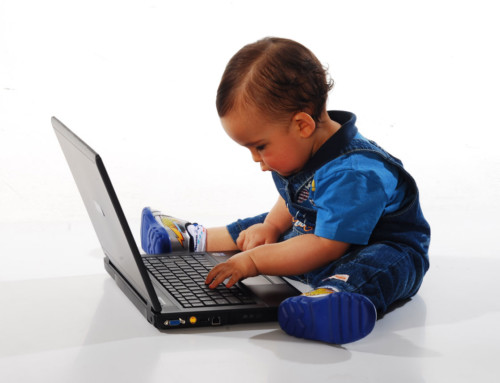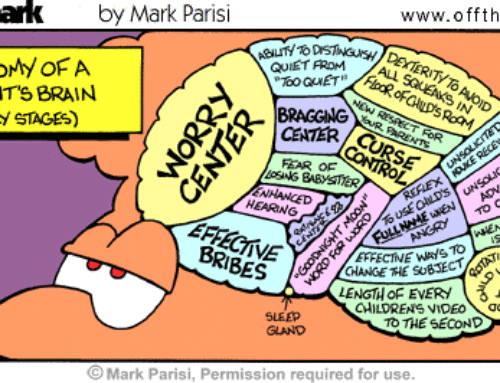By Tracy G. Cassels
In a world where we are constantly worrying about what we teach our children, focusing on explicit messages, I thought it would be good to take a look at the research on exactly what factors are influencing how our children learn from us and what this can mean for how we interact with them. Of note, the research is with older children (preschool age, often) as the focus is on verbal communication of some form or another (even just pointing at times) but what we know of these ages may help us extrapolate downward to our youngest or even just give us the information we need to know how some of our less obvious actions may affect our young ones of all ages.
Past Accuracy Matters
We know that children prefer to learn from individuals who have previously shown they are knowledgeable about areas the child is also knowledgeable about Interestingly, the degree of accuracy needed changes with development. Three year olds will only favour someone if they have always been accurate whereas by four, children can play the odds and seem to keep track of one’s statistical likelihood of being accurate[3]. This implies a huge shift in the way children perceive accuracy; before four years of age, they seem to focus on inaccuracy and eliminate someone as a reliable source once they have any evidence to contradict that view, but by four, they have learned that someone who is accurate 75% of the time is still better than someone who is accurate 25%. Accuracy also has implications for more global traits for children. In one study it was found that children aged 5 believed an accurate individual was also more likely to be prosocial than an individual who was not accurate[4]. This halo effect is important to be aware of in the way in which our children view us and the people around us, and also how they treat them more generally. Exposure to all types of people may help children in not making too many inaccurate judgments of others. Confidence Matters In addition to accuracy, children are also very aware of various cues to confidence and use them when deciding whom to learn from. For example, children learn from individuals who show verbal signs of confidence (e.g., using “know” instead of “guess”)[5], nonverbal signs of confidence (e.g., shrugging versus not, facial expressions)[6], and of course a combination of both verbal and nonverbal cues[7]. Of course, not all children treat confidence as being indicative of knowledge or a lack of cues to confidence as being lacking in knowledge. In a series of studies pitting confidence versus accuracy, one child reported believing that a hesitant individual was not unknowledgeable but rather simply thinking deeper; that is, signs of hesitancy were seen as a reflection of a deeper thought process[8]. However, regardless of the use of confidence in learning information, a vast majority of the children in these studies reported that the confident individual was smarter than the hesitant individual, which has implications for how children extend these cues to other traits. Interestingly, adults also use confidence when under cognitive load[9], suggesting that it is a very basic cue for us to pay attention to. Adults in an experiment had to decide whom to trust in an eyewitness testimony based on calibration (i.e., the degree to which a person’s confidence matched their accuracy; good calibration = confident when accurate and hesitant when inaccurate). Two eye witnesses were presented, both were accurate once and inaccurate once, but one was well-calibrated and the other was not (being confident regardless of accuracy). When not under cognitive load, adults preferred to believe the well-calibrated witness, but under cognitive load, adults, like children, believed the confident but poorly-calibrated witness. Given the link to other traits like “being smart”[8], it is not surprising that confidence has such a pull, but we must be careful as we know that confidence in our society can be a sign of everything but knowledge. Who Is Teaching Matters Overall, we know that children prefer to learn from someone they know over a stranger[1], sometimes to the point of it being problematic. For example, 3-year-old children in one study continued to prefer a teacher they knew who was consistently inaccurate over a stranger who was consistently accurate. By 4 years of age, though, children still show some familiarity preference, but the strength is weakened when the familiar source is often inaccurate. Evolutionarily speaking, this isn’t too surprising. People we know are most likely to know information most relevant to your unique circumstance and situation. However, in modern society, this familiarity shouldn’t have as much of a pull as we require lots of information from various sources in order to survive. And in fact, those closest to us may not have the right information to help us succeed. Attachment Matters Research into the long-term influence of attachment status has shown that early attachment (at 15 months) matters in terms of how a child responds to learning from his/her mother versus a stranger (at 4-5 years)[10]. Specifically, when either the mother or stranger could be correct (the ambiguous situation for the child), children who are securely attached are more likely to trust their mother, but when the mother’s answer contradicts what the child can see perceptually (non-ambiguous), securely attached children will contradict their mother in favour of the stranger and their own perceptions. Children who are insecure-avoidant do not show any tendency to go with their mother in either scenario while children who are insecure-resistant go with their mother all of the time, even when the mother contradicts what the child can see. When we think about what these patterns of attachment mean (if you need to read more, see here), it suggests that securely attached children feel comfortable trusting their mother as a source of information unless she contradicts what the child can see, in which case the child is happy to refute her. Insecure-avoidant children pay no mind to their mother, their experiences having taught them that she is not to be trusted. Insecure-resistant children only pay attention to their mother, to the point of it being a fault, and yet their experiences would suggest they have to keep track of what their mother is thinking and feeling in order to keep themselves safe. Keep this in mind when you think of all the reasons it’s important to foster secure attachment. Similarity Matters Like many other areas, children prefer people who are “like them” when it comes to learning[11][12]. But what kind of similarity is relevant? It’s actually not sex (though some research would suggest it’s possible[13]), but shared preferences that guides children’s preference to learn. And this shouldn’t be too surprising as we are more likely to see someone who shares a preference as being knowledgeable in other areas which might interest us. This is why children prefer to learn play from other children, or toy functions. Of course, we can use this to our advantage in that if we can join in on our children’s interests, we become a greater source of knowledge for them. They feel that they can turn to us more. When we think of children who distance themselves from their parents, it’s often (anecdotally) reported that they just don’t “get” them or share any interests. So if you want your children to look to you, you have to make them want to by showing that you can share interests. Take Home Message Accuracy is huge to children in deciding from whom to learn – at all ages – but when it comes to passing on ideals or more negative views of others, accuracy is very hard to define. This is why we can see the transmission of these values within families and across generations. And when we factor in influences like similarity (which often occurs within a family), confidence (which is very apparent when speaking of opinions disguised as facts), and familiarity (again, very clear in a family setting), we can see how easy it is for children to pick up on ideas that are not only false, but damaging to those they will come into contact with. Racism, sexism, misogyny are all examples of ideas that are so easily spread between generations thanks to these learning heuristics we’ve evolved with. The heuristics our children have evolved to use when learning information from others can be wonderful and help them navigate the world. However, they can also lead to the transmission of information and views that are detrimental. Hopefully we can use this information about heuristics to fight the negative in our society. We need teachers and friends and neighbours to know that they can become familiar, similar, and confident when they share information that contradicts the negative children may hear from those at home or from friends. In the end, we are teaching our children a lot. It just may be in ways we don’t intend so we must be aware of that to ensure we pass on the information we want, and not what we don’t. [Image Credit: AACDC]
[1] Corriveau KH, Harris PL. Choosing your informant: weighing familiarity and past accuracy. Developmental Science 2009; 12: 426-37. [2] Birch SAJ, Vauthier SA, Bloom P. Three- and four-year-olds spontaneously use others’ past performance to guide their learning. Cognition 2008; 107: 1018-34. [3] Pasquini E, Corriveau KH, Koenig M, Harris PL. Preschoolers monitor the relative accuracy of informants. Developmental Psychology 2007; 43: 1216-1226. [4] Brosseau-Liard PE, Birch SA. “I bet you know more and are nicer too!” What children infer from others’ accuracy. Developmental Science 2010; 13: 772-8. [5] Sabbach MA, Baldwin DA. Learning words from knowledgeable versus ignorant speakers: links between preschoolers’ theory of mind and semantic development. Child Development 2001; 72: 1054-70. [6] Birch SAJ, Akmal N, Frampton KL. Two-year-olds are vigilant of others’ nonverbal cues to credibility. Developmental Science 2009; 13: 363-9. [7] Jaswal VK, Malone LS. Turning believers into skeptics: 3-year-olds’ sensitivity to cues to speakers credibility. Journal of Cognition and Development 2007; 8: 263-83. [8] Brosseau-Liard PE, Cassels TG, Birch SAJ. Actions sometimes speak louder than words: Children’s use of a model’s confidence versus past accuracy. (Under Review) [9] Tenney ER, Small JE, Kondrad RL, Jaswal VK, Spellman BA. Accuracy, confidence, and calibration: how young children and adults assess credibility. Developmental Psychology 2011; 47: 1065-77. [10] Corriveau KH, Harris PL, Meins E, Ferneyhough C, Arnott B, Elliott L, Liddle B, Hearn A, Vittorini L, de Rosnay M. Young children’s trust in their mother’s claims: longitudinal links with attachment security in infancy. Child Development 2009; 80: 750-61. [11] Shutts K, Kinzler KD, McKee CB, Spelke ES. Social information guides infants’ selection of foods. Journal of Cognitions and Development 2009; 10: 1-17. [12] Fawcett CA, Markson L. Children reason about shared preferences. Developmental Psychology 2010; 46: 299-309. [13] Shell R, Eisenberg N. The role of peers’ gender in children’s naturally occurring interest in toys. International Journal of Behavioral Development 1990; 13: 373-88.






Nice to see some of this research made accessible! I’d just like to add that there is some (though not a lot of) research showing that younger kids too – 12-18 months – use some of these cues to guide their learning. It becomes tricky to go much younger than that (and we wouldn’t even expect some of these cues to matter for very young babies, e.g. accuracy – you need a substantial amount of knowledge before even deciding what’s accurate and what isn’t)…
I wasn’t sure of the earlier-age work so left it out 🙂 You should do a guest post on this for me 😉
I’d love to hear an opinion piece on children’s leashes!
Oh yes, those. I will add it to my list of things to write on 🙂
Thanks Tracy, can’t wait 🙂
Hi, very interesting read! Just wondering about the link to info on patterns of attachment. I can’t seem to find a hyper link in the text & would like to read more on those definitions. Thanks!
If you scroll over it should be there 🙂 Sadly the new these got rid of the underlined hyperlinks!